
The Amtsanschliesser 33 ("telephone office connector") is a very compact and sturdy telephone for military use. Assumed to have been introduced together with the FF33 and as replacement to the dial unit which was available for the FF33 predecessor FF26 (which contrary to the FF33 supported direct connection to CB networks). It seems to have been in use still in the Bundesgrenzschutz and/or early Bundeswehr in the 50ies [1].
The case is made of bakelite but with more wall thickness than civil instrument casings. The general shape is very similar to a normal desk telephone but more compact. It is in fact the smallest dial telephone of it's era. A leather sleeve was used for transport (see links under sources for pictures, I do not own one). As dial a standard german type N30 dial was used. As handset any FF33 handset can be connected using the standard FF33 handset plug. The internals and the electrical setup are basically identical to any dial telephone: capacitor and ringer, coil, hookswitch. To separate the CB DC current when connecting to a LB field telephone two additional capacitors are built in. The ringer has no bells, it is only a buzzer (for space saving reasons).
From "Der Amtsanschliesser 33. GDV 833, PDV 833, 1954" [1]:
The Amtsanschliesser 33, together with the field handset 33, enables connection to postal telephone exchanges. In CB central offices (central battery operation) and dial central offices, the Amtsanschliesser equipped with the field handset is an independent telephone set. In the case of SB central offices (local battery operation with end of call supervision), a field telephone 33 is also required. The Amtsanschliesser 33 also has a switching jack which enables the switching of postal connections to the field network.
Has three use cases:
To showcase the compactness of the Amtsanschliesser here the same compared to some contemporary german civil telephones.
From left to right: W28 (Design S&H 1928, this one Gross & Graf 38); Frankfurt (Design Fuld 1928, this one Fuld 33); Weltruf (Design Mix&Genest 1935, this one Mix&Genest 37); M25 (Design Merk 1925, this one Merk 29).

To showcase the compactness of the Amtsanschliesser here the same compared to some contemporary international civil telephones.
From left to right: WE302 (USA, Design Western Electric 1937, this one WE 49); EB 1932 (Norway, Design Elektrisk Buerau 1931, this one EB 1940); Modell 29 (Switzerland, Design Hasler 1929, this one Favag 35); M31 (Austria, Design Kapsch 1931, this one Kapsch 37).
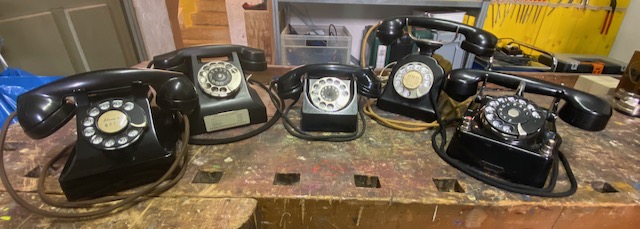
Disassembled.
Made by NTT in 1937 (NTT was Fuld and then became Telefonbau und Normalzeit, now part of Avaya).
Dial made by Merk Telefonbau (was then a partner Company of Fuld/NTT).
Capacitors made by Ludwig Baugatz.
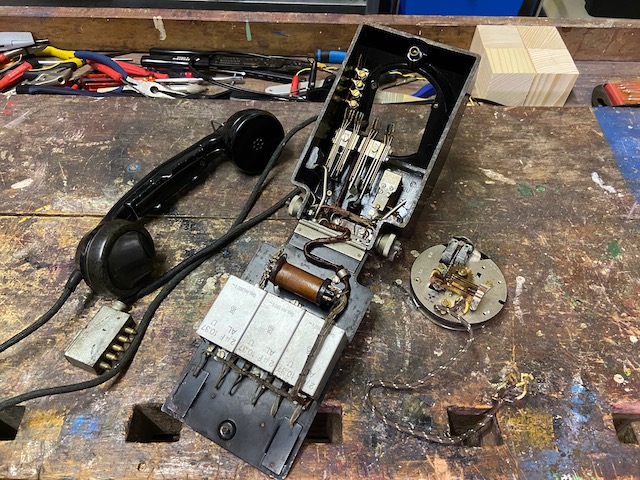
Ready to use.
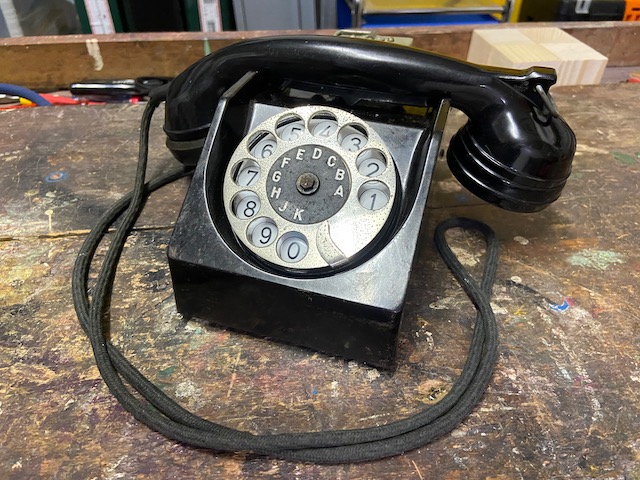
Diagram.

Dial type N30, made by Merk Telefonbau.
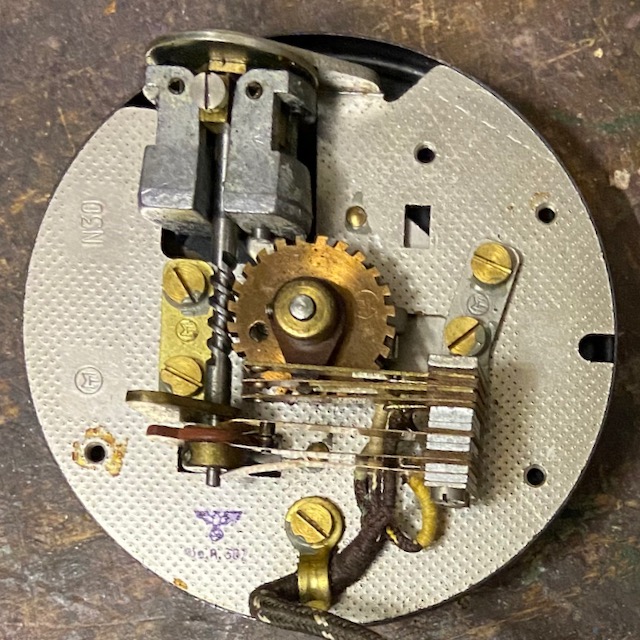
Left FR 1936, right NTT 1937.
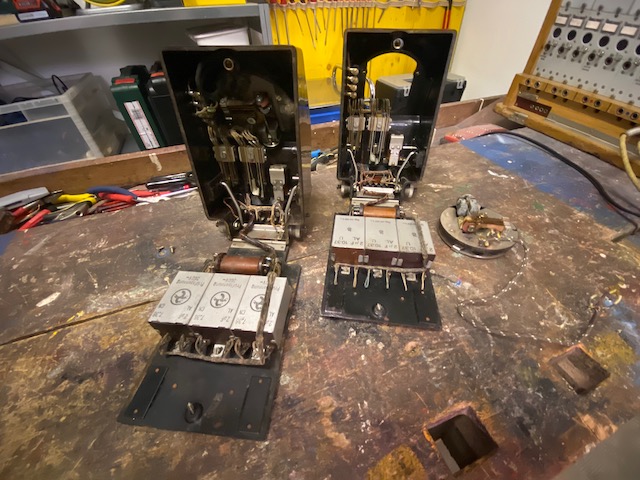
The screw is marked with a red ring to indicate where to open.
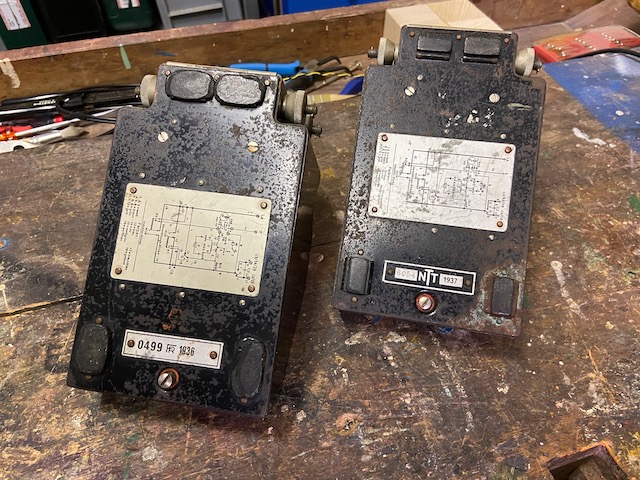
The FR device has a bakelite dial disk, the NTT one of steel.

Standard connection for CB and automatic networks: La - Lb/SA/ZB.
For automatic networks with earth dialling also connect E (according to [2] this was only used in Altenburg and Dresden).
For LB networks with automatic end of call signalling (SB, Selbsttätiges Schlusszeichen): La - Lb/OB.
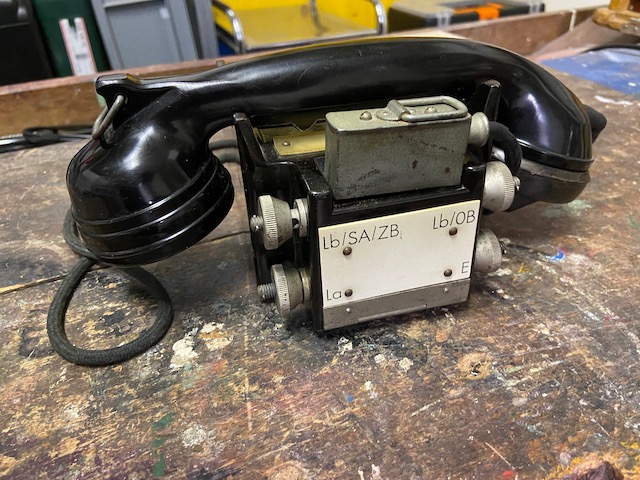
When using on an SB network use the FF33 handset and leave connected to the FF33. Connect the FF33 with patchcord to the "Induktorklinke". Connect the line to the Amtsanschliesser La - Lb/OB.
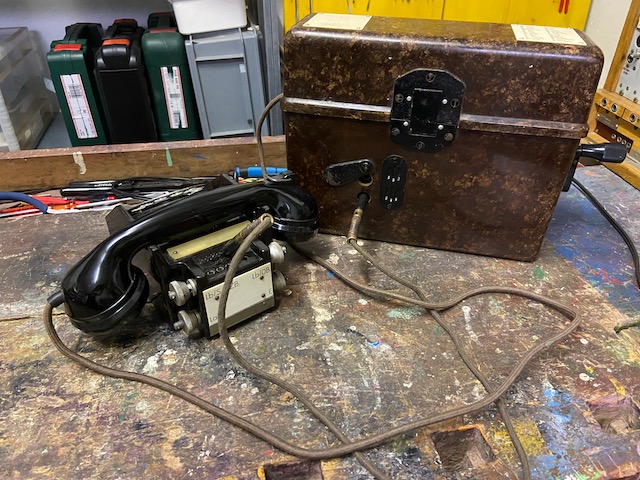
The "Induktorklinke" (Magneto socket) kan only be connected when no handset is connected.
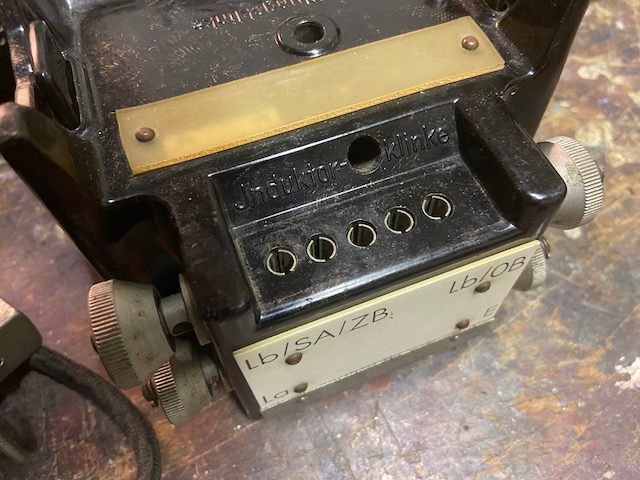
To switch a CB call to a LB line use the "Vermittlungsklinke" (Switch socket).
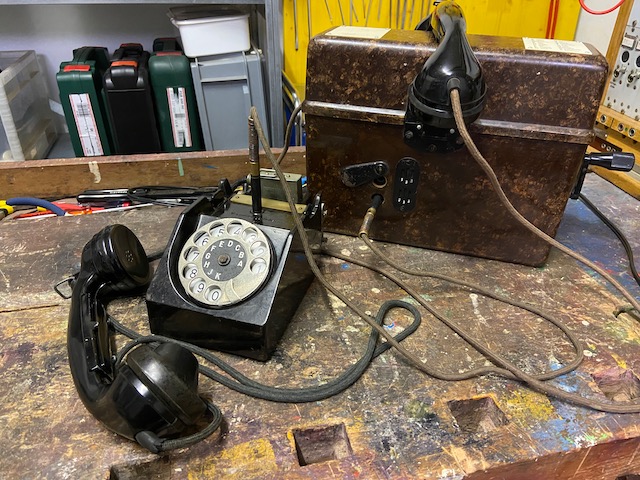
As long as the "Vermittlungsklinke" is connected the handset cannot be put on-hook (to prevent disconnecting an ongoing call).
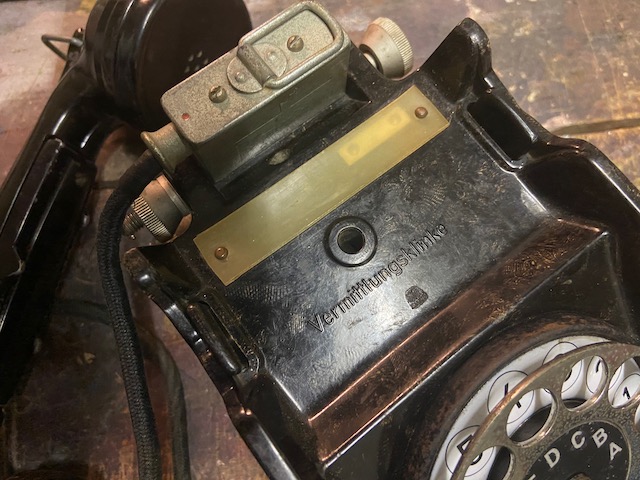
Below the "Vermittlungsklinke" the "Bird" acceptance stamp.
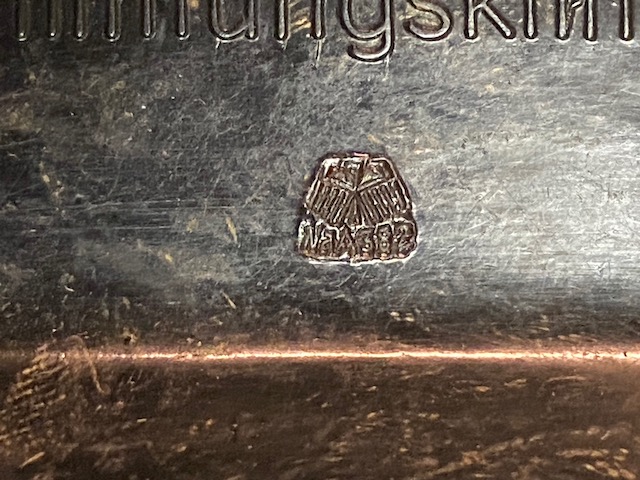
Creative Commons Attribution-ShareAlike 4.0 International License